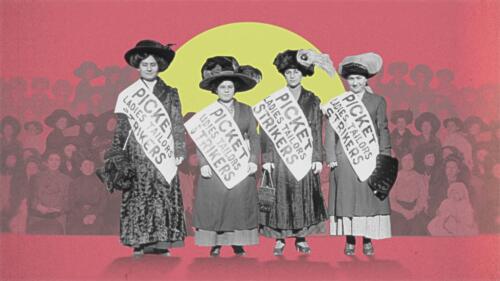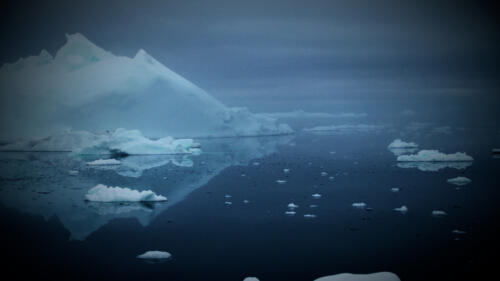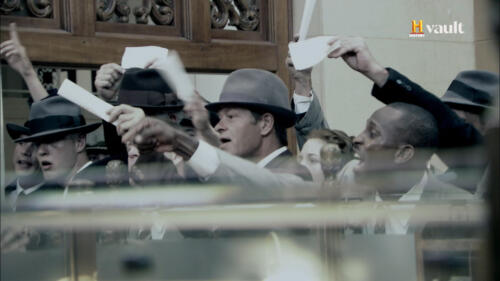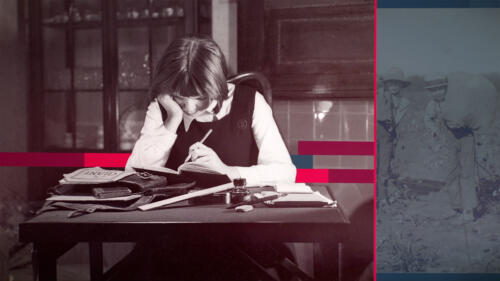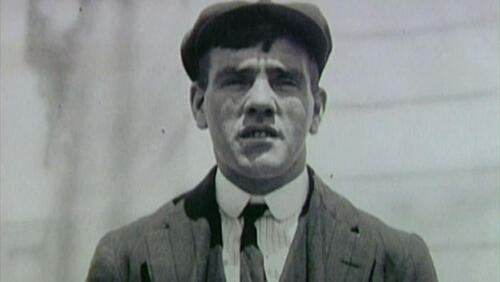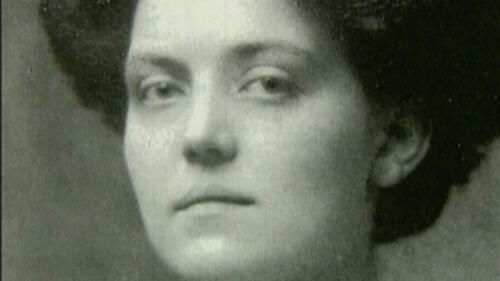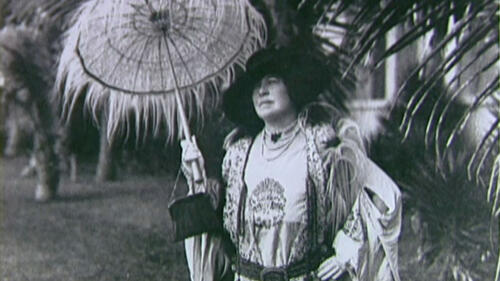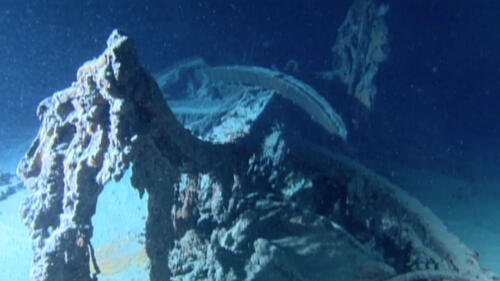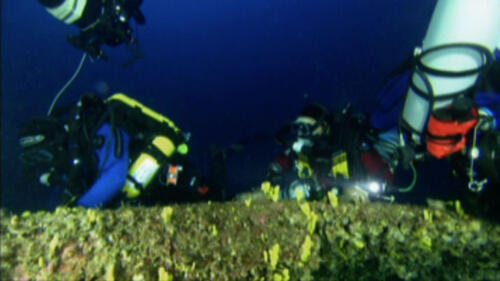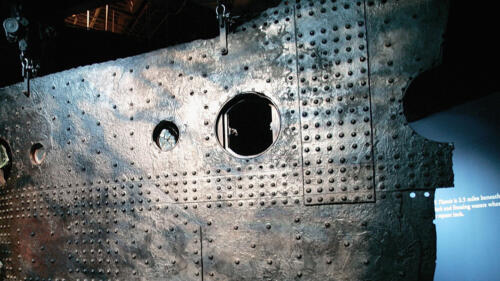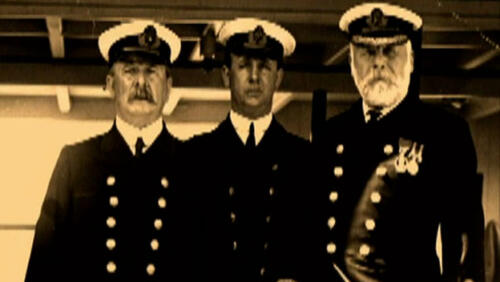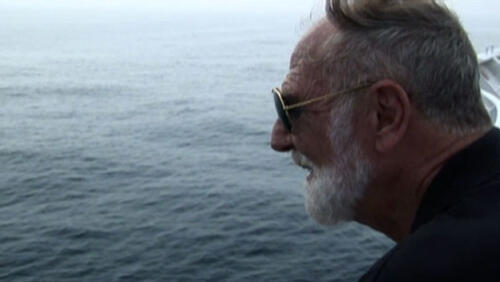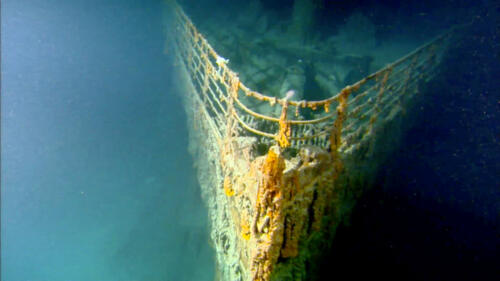Early 20th Century U.S.
In the early 20th century, America was flexing its economic and political muscle on the international stage. The era was defined by the temperance movement, Progressive-era activism, the sinking of the Titanic and World War I.

Start Here

The man known for changing the auto industry also used his immense power and influence to quash unions, control immigrant workers and vilify Jewish people.

The catalog was the Amazon.com of its time—packaged in hundreds of pages.

The 1906 bestseller was one of the most influential books in American history—but not in the way its author intended.

More than just facts and figures, these statistics highlight the massive scale of Titanic's ambition—and of its tragic sinking.
Zoot Suit Riots
How Anti-Mexican Racism in L.A. Caused the Zoot Suit Riots
Learn how media bias and anti-Mexican racism contributed to the Zoot Suit Riots in Los Angeles in 1943.
3 Key Early 20th Century Movements
Explore All Related Topics

As tycoons amassed massive wealth, laborers, immigrants and families struggled to survive.

In 1907, bank failures exposed the financial system's fragility.

The luxury liner’s collision with an iceberg set off a tragic chain of events.

Some of the most distinctive man-made structures in the National Park System are meant to look like man didn’t make them at all.

Clever marketing gimmicks helped push the shopping cart into supermarkets.

These people made history, but they also found friendship—in each other.

The term “86” has woven its way into American slang, typically meaning to get rid of or refuse service. And while its exact origins are murky, its use dates back to the 1930s.

In 1868, a U.S. Secretary of State promoted Greenland as a land that could empower the United States to 'command the commerce of the world.'

The L.A. Aqueduct was celebrated as an engineering marvel at its completion in 1913, but it drained distant watersheds for the city's own precarious supply.

A 1929 prepaid hospital plan created in Dallas gave rise to early health insurance companies—and helped spur the growth of a major industry.

A 40-hour, five-day work week is now standard for full-time jobs in America, but that wasn't true until the 1930s.

Katharine Wright helped publicize her brothers' first-in-flight achievement and made sure they made it into the record books.

When disaster struck the Titanic in April 1912, a network of people mobilized to help save lives and care for survivors.

The 1906 bestseller was one of the most influential books in American history—but not in the way its author intended.

Preserved by icy waters, the majestic wooden ship of the infamous 1914-1916 Antarctic expedition is revealed in images from the deep of the Weddell Sea.

America's interstate highway system cut through the heart of dozens of urban neighborhoods.

The man known for changing the auto industry also used his immense power and influence to quash unions, control immigrant workers and vilify Jewish people.

When smallpox ravaged the United States at the turn of the 20th century, many public spaces required people to show their vaccine scars for entry.

During a time when violence against Black Americans was common, Holiday's haunting rendition of the song often left audiences uncomfortable.

As the rich grew richer during the Gilded Age, the poor grew poorer, spurring the call for reforms.

A stunned world demanded answers. So did two relentless lawyers in the U.S. and Great Britain: Senator William Alden Smith and Lord Mersey.

Edward Smith's body was never recovered, and his final moments remain a mystery—with no shortage of conflicting accounts.

For at least the first hour after the iceberg collision, the ship's crew downplayed the danger. Many passengers remained optimistic.

More than just facts and figures, these statistics highlight the massive scale of Titanic's ambition—and of its tragic sinking.

Using white colleagues as front men, Bernard Garrett bought real estate, made millions and uplifted fellow blacks in pursuit of the American dream.

The Standard Oil magnate spent his whole life trying to bury the story of his dad's dirty deeds.

Under the 'American Plan,' women could be detained for sitting in a restaurant alone, changing jobs—or, often, for no reason at all.

The 1911 factory blaze shocked the nation and spurred new regulations to protect factory workers.

Blackface became popular in the U.S. after the Civil War as white performers played characters that demeaned and dehumanized African Americans.

Did a mummy's curse cause the Titanic to sink?

Black Americans could temporarily escape the Jim Crow laws at early vacation resorts that catered only to them.

The catalog was the Amazon.com of its time—packaged in hundreds of pages.

Before studies showed that cigarettes caused cancer, tobacco companies recruited the medical community for their ads.

All but one of the remains tested so far have been African-American males.

Roosevelt's heroism at the Battle of San Juan Hill was the culmination of years of conscious personal transformation and myth-making.

In the early days of U.S. parcel service, there weren’t clear guidelines about what you could and couldn’t mail.

The Rosewood Massacre was an attack on the predominantly African American town of Rosewood, Florida, in 1923 by large groups of white aggressors. The town was entirely destroyed by the end of the violence, and the residents were driven out permanently.

High speeds, a wrong turn, weather conditions and lack of binoculars all contributed to one of the worst maritime tragedies.

Social Darwinism is a set of ideologies that emerged in the 1800s in which the theory of evolution was used to justify political, social or economic views.

Jim Crow laws were state and local statutes that legalized racial segregation. Enacted after the Civil War, the laws denied equal opportunity to Black citizens.

It’s Jack and Rose’s movie, but a lot of the people they meet had their own incredible stories.

The father of the 401(k) is its biggest critic.

How emergency rooms became the only place in America where patients had a right to free treatment.

Sears, Roebuck and Company grew into an American retail giant from its 19th century beginnings as a Midwestern mail-order business.

To craft legal discrimination, the Third Reich studied the United States.

The capture of Guam was short and bloodless.

How the Plattsburg camps for young men tried to raise a volunteer army ahead of World War I.

A rare photo of the doomed ocean liner, likely taken the day before it set sail on its maiden voyage, is going on the auction block.

In 1985, a joint American-French expedition tracked down one of the biggest prizes in maritime archeology: the 73-year-old wreck of the 'unsinkable' ocean liner Titanic.

Always wanted to visit the underwater wreckage site of Titanic? Now you can.

For nearly 30 years, a guide called the “Negro Motorist Green Book” provided African Americans with advice on safe places to eat and sleep when they traveled through the Jim Crow-era United States.

King Edward VIII's 1936 abdication caused the British crown's most profound crisis in modern history. But did it prevent greater long-term trouble for the monarchy?

Master escape artist Harry Houdini died on Halloween of 1926 from a ruptured appendix. But details of his demise remain mysterious to this day.

On the night of July 25, 1956, a collision between the ocean liners SS Andrea Doria and MS Stockholm killed 51 people and prompted one of the largest civilian maritime rescues in history.

The origins of America's decennial population count are ancient—but it's changed with the times.

In July 1915, the SS Eastland capsized, claiming 844 lives and becoming the deadliest disaster in Chicago's history.

From a 17th-century Dutch tulip craze to the infamous 1929 stock market crash, learn the stories behind six historical booms that eventually went bust.

Check out seven surprising facts you may not know about these celebrations.

The Sultana wreck claimed over 1,800 lives.

For ages, people used the sun to determine what time it was where they were. Every community set its clocks to noon based on when the sun reached its highest position in the sky; as a result, when it was noon in Washington, D.C., the local time in New York City was already minutes ahead. […]

Explore eight surprising facts about the groundbreaking polio vaccine that Dr. Salk developed.

Take a trip through six of history’s most enchanting and influential amusement parks.

The oil tycoon and philanthropist had some surprising aspects.

The term traces back to a derogatory minstrel routine from the 1830s.

Find out how Americans dined while riding trains from coast to coast.

Did you know that the Rough Riders didn’t really ride and that Guam’s capture was surprisingly peaceful?

What did Titanic's passengers eat hours before their ship met its tragic end?

Here are five places you can visit today that are still affected by the Titanic disaster.

Explore five facts about RMS Carpathia, the only vessel to rescue any survivors of the Titanic disaster.

The trees, a symbol of international friendship, initially arrived thanks to the work of travel writer Eliza Scidmore.

Find out how newspapers reported on the Triangle Shirtwaist fire, which killed nearly 150 New York City workers and helped expose poor working conditions 100 years ago.

The Spanish-American War was an 1898 conflict between the United States and Spain that ended Spanish colonial rule in the Americas.

John D. Rockefeller (1839-1937), founder of the Standard Oil Company, became one of the world’s wealthiest men as America's first billionaire and a major philanthropist.

William Randolph Hearst (1863-1951) launched his career by taking charge of his father’s struggling newspaper the San Francisco Examiner in 1887. By the 1930s, he had built the nation’s largest media empire, including more than two dozen newspapers in major cities nationwide.

The Triangle Shirtwaist Company fire killed 146 in 1911.

The Titanic was a luxury British steamship that sank in the early hours of April 15, 1912 after striking an iceberg, leading to the deaths of more than 1,500 passengers and crew. Read about the timeline of its sinking, the many lives lost and those who survived.

The Battle of Manila Bay produced a resounding naval triumph for the U.S. Asiatic Squadron in the early stages of the 1898 Spanish-American War.





